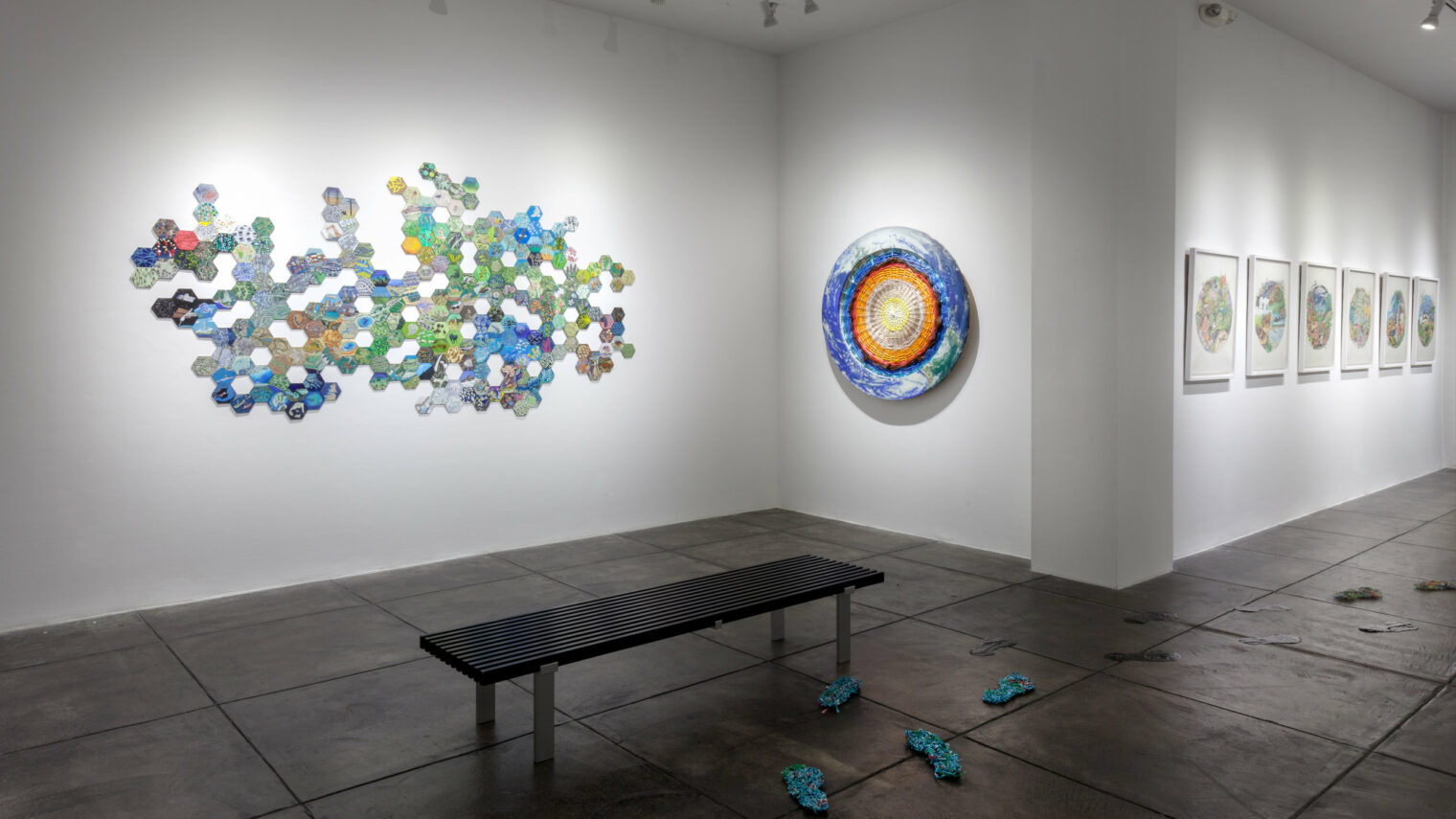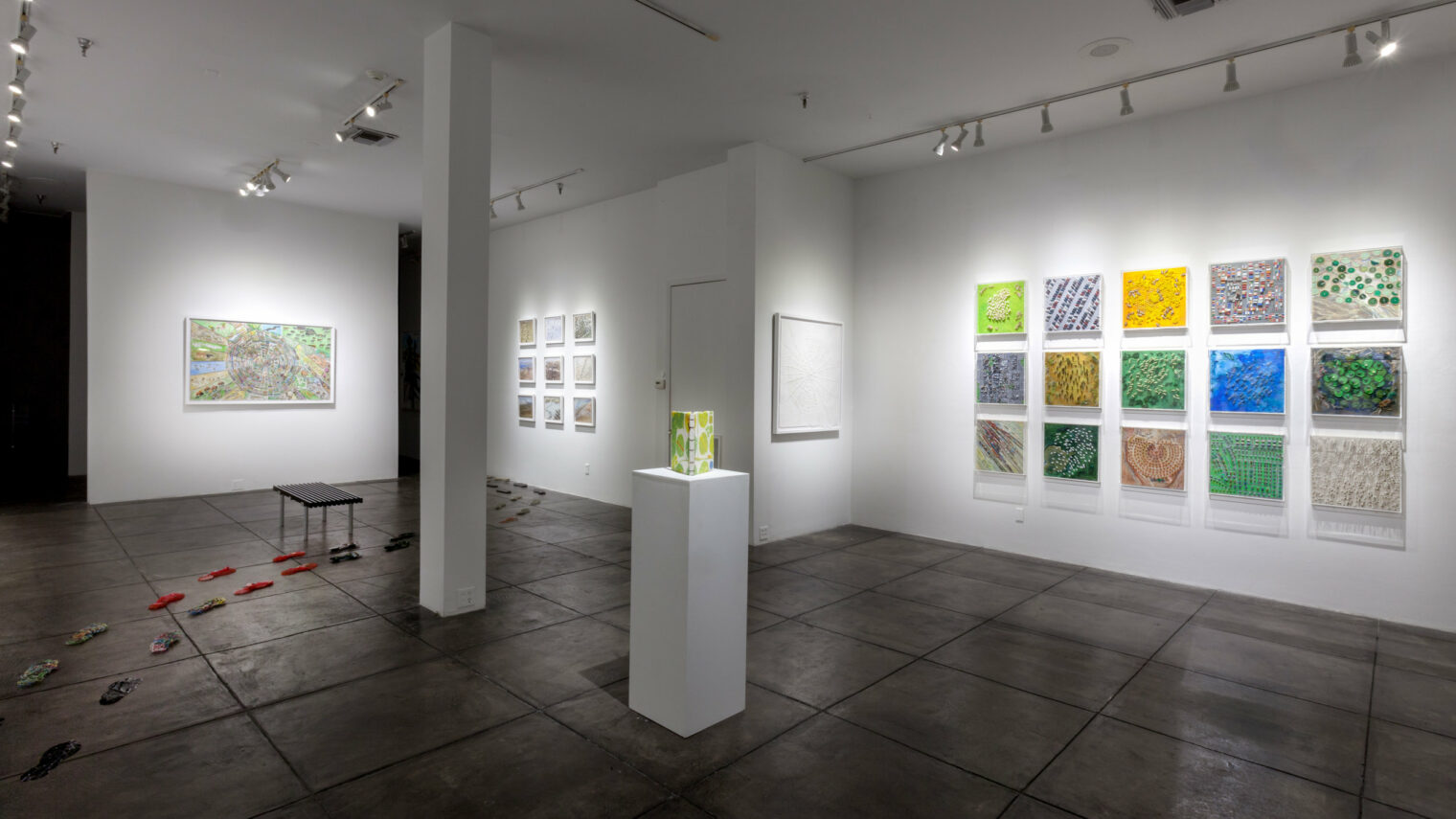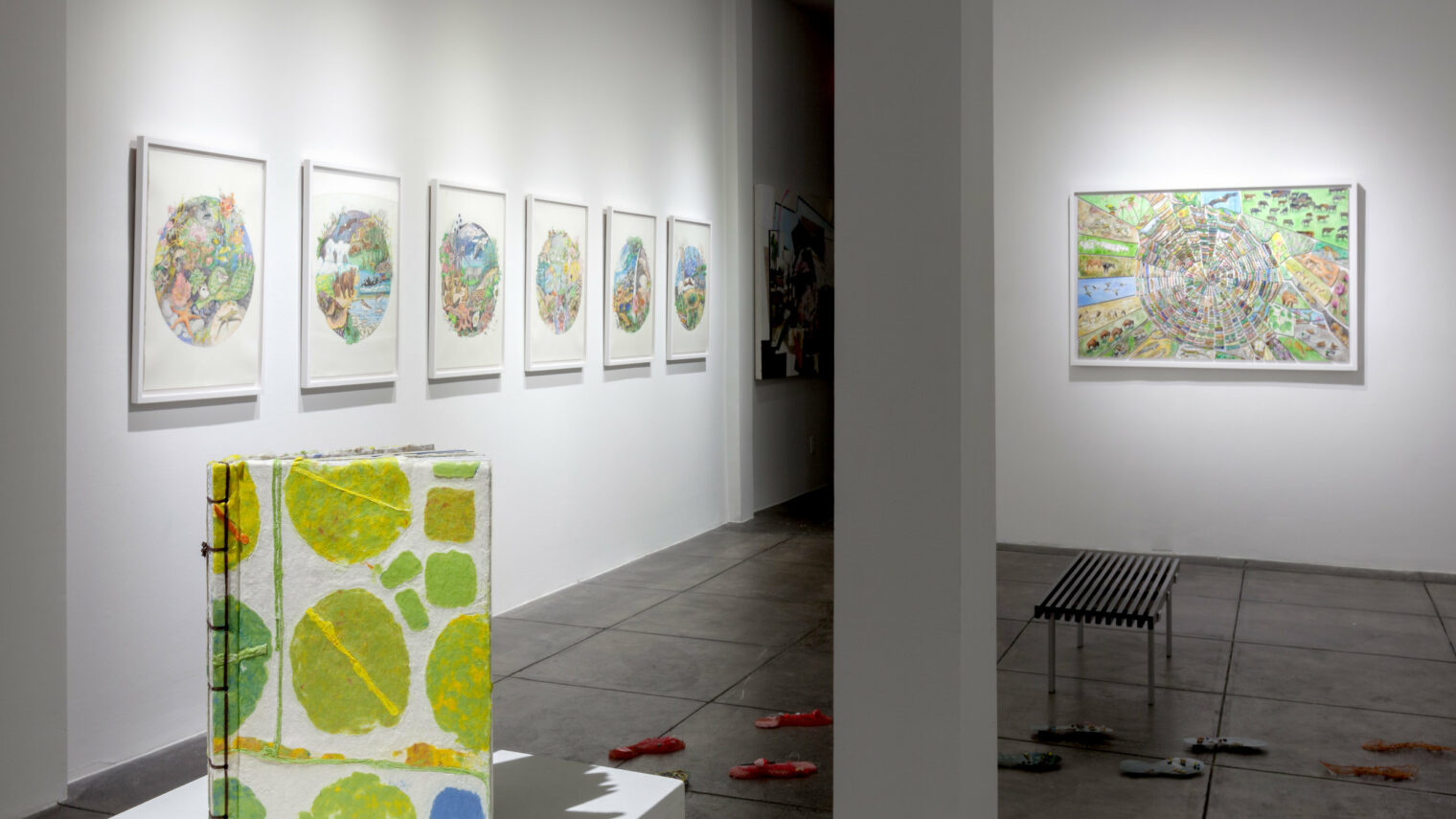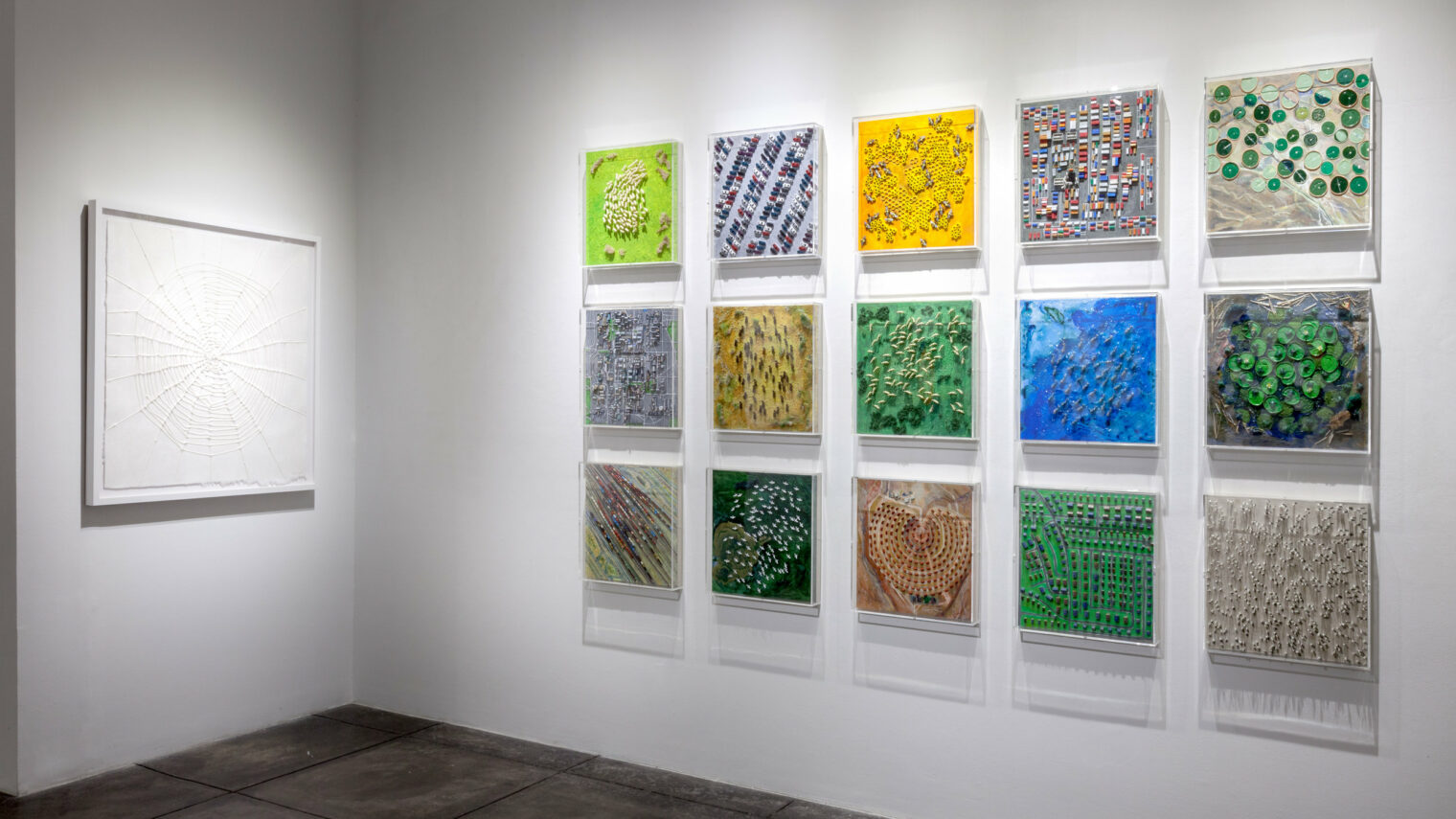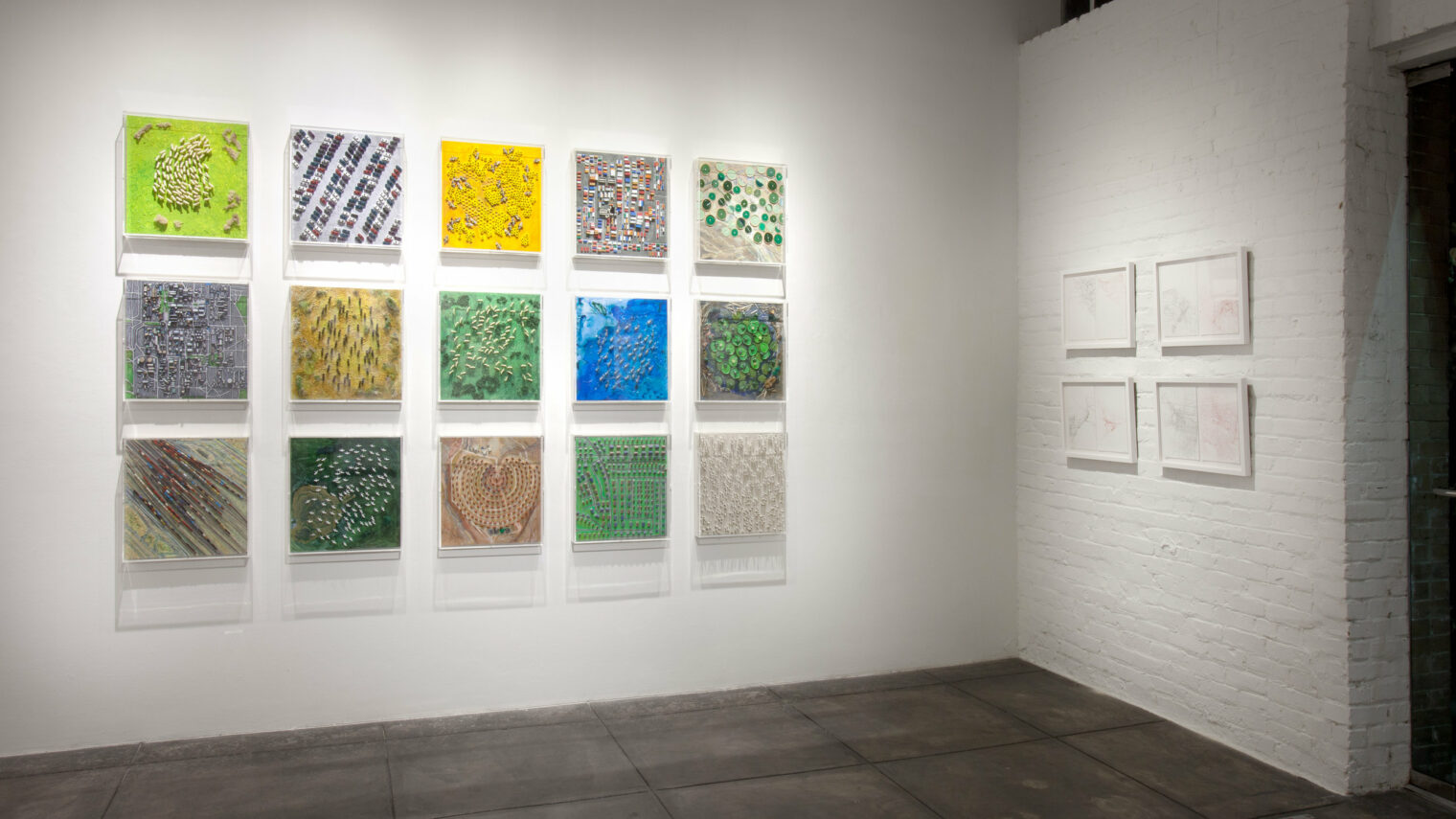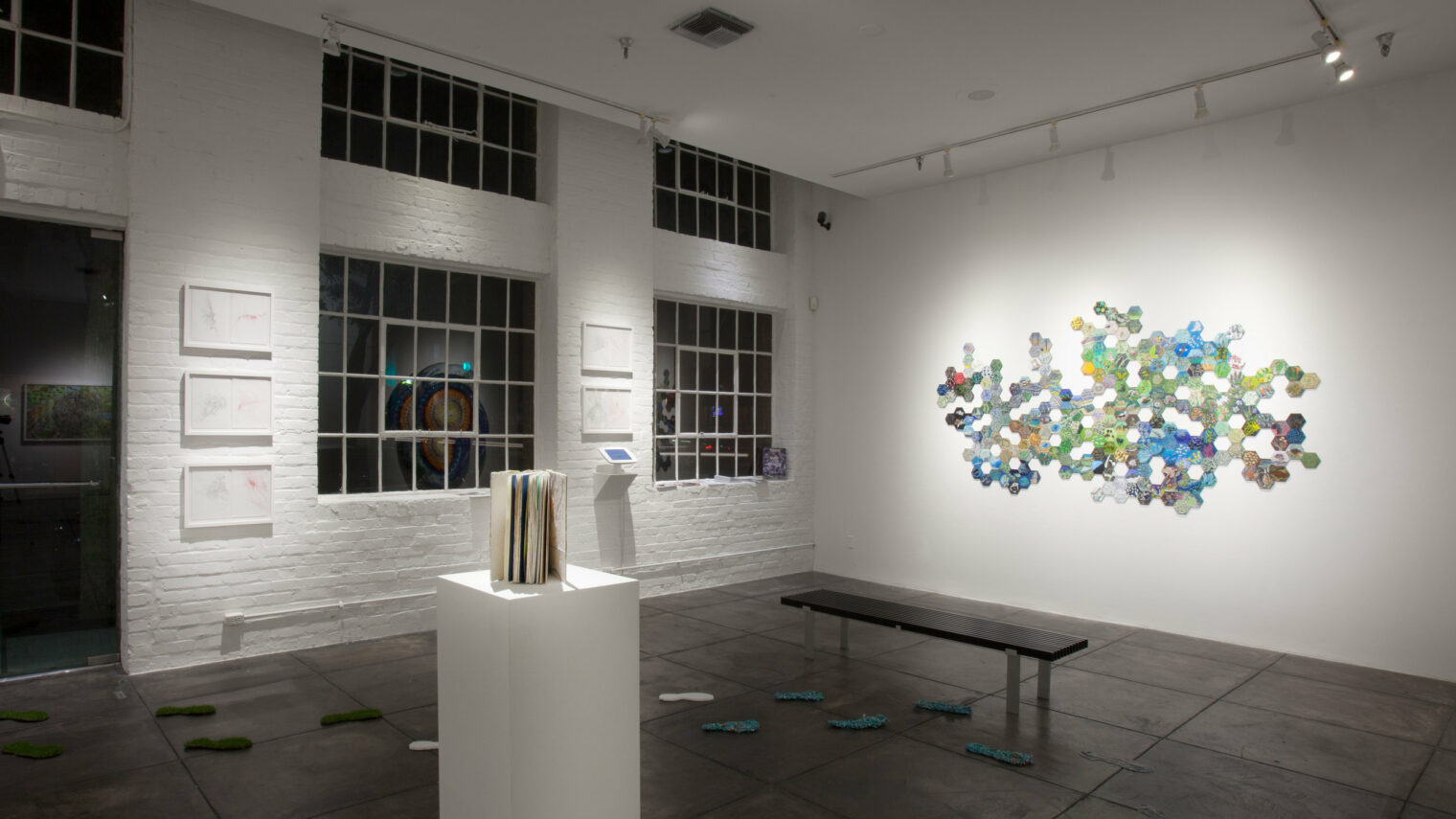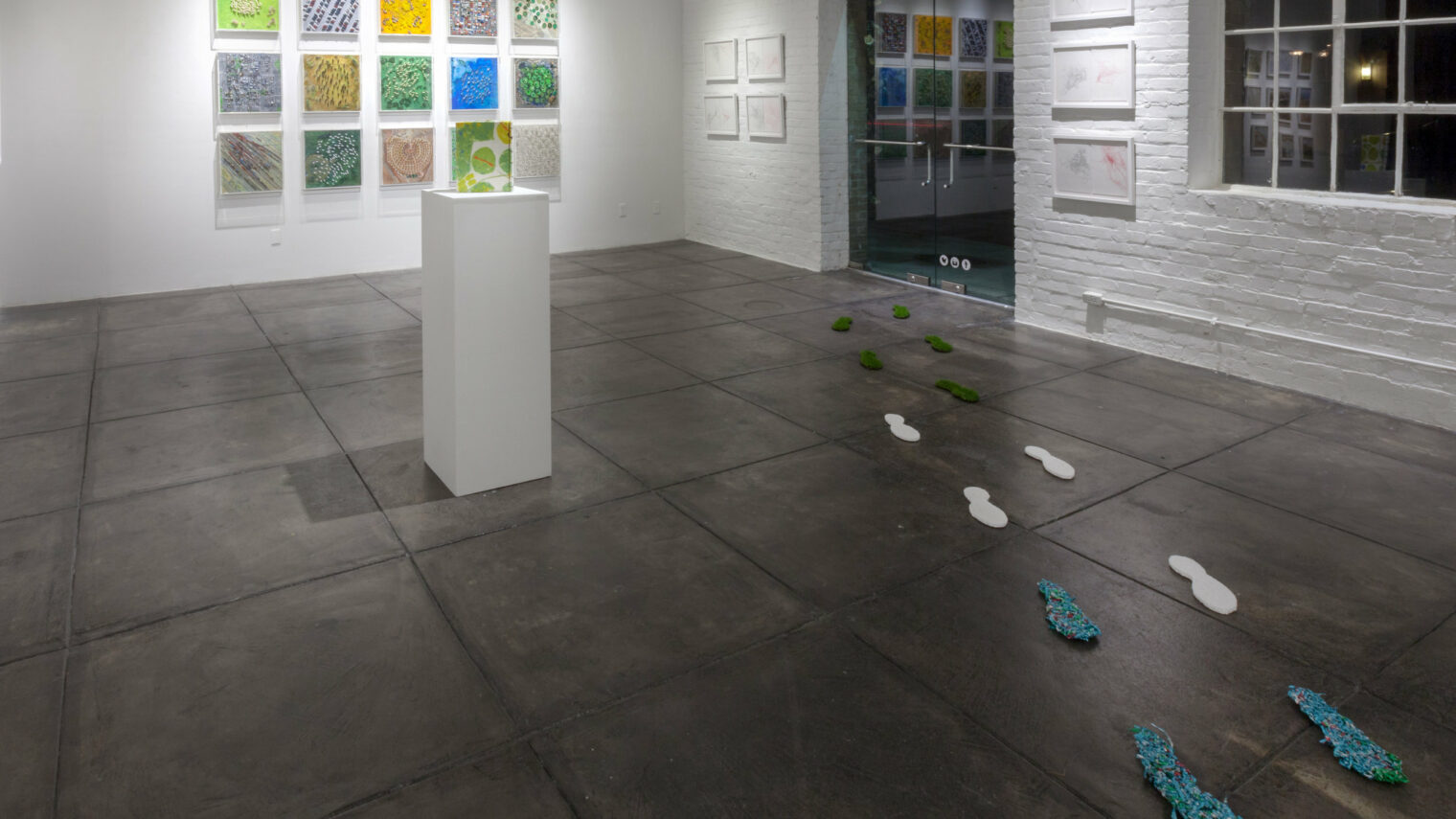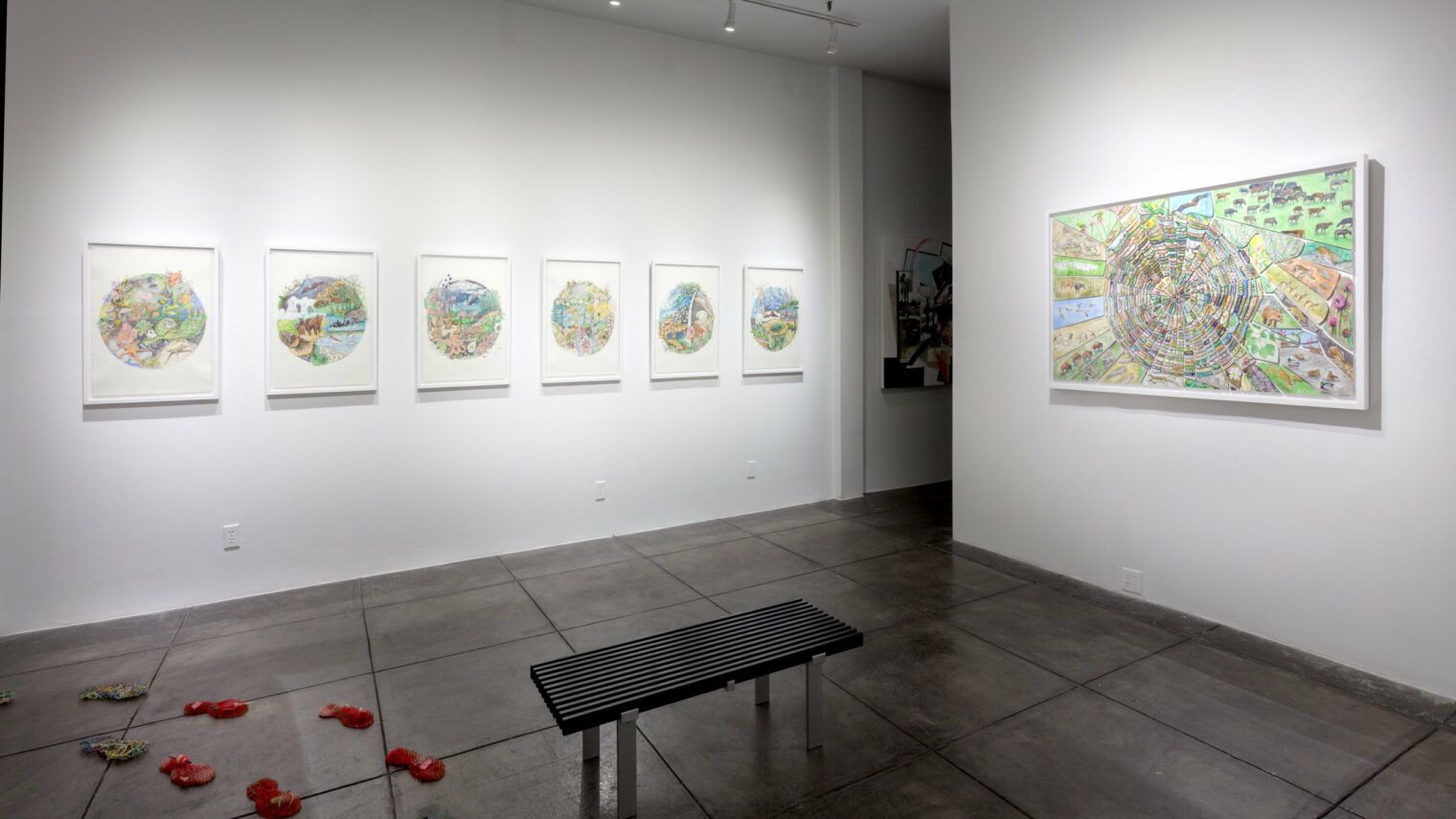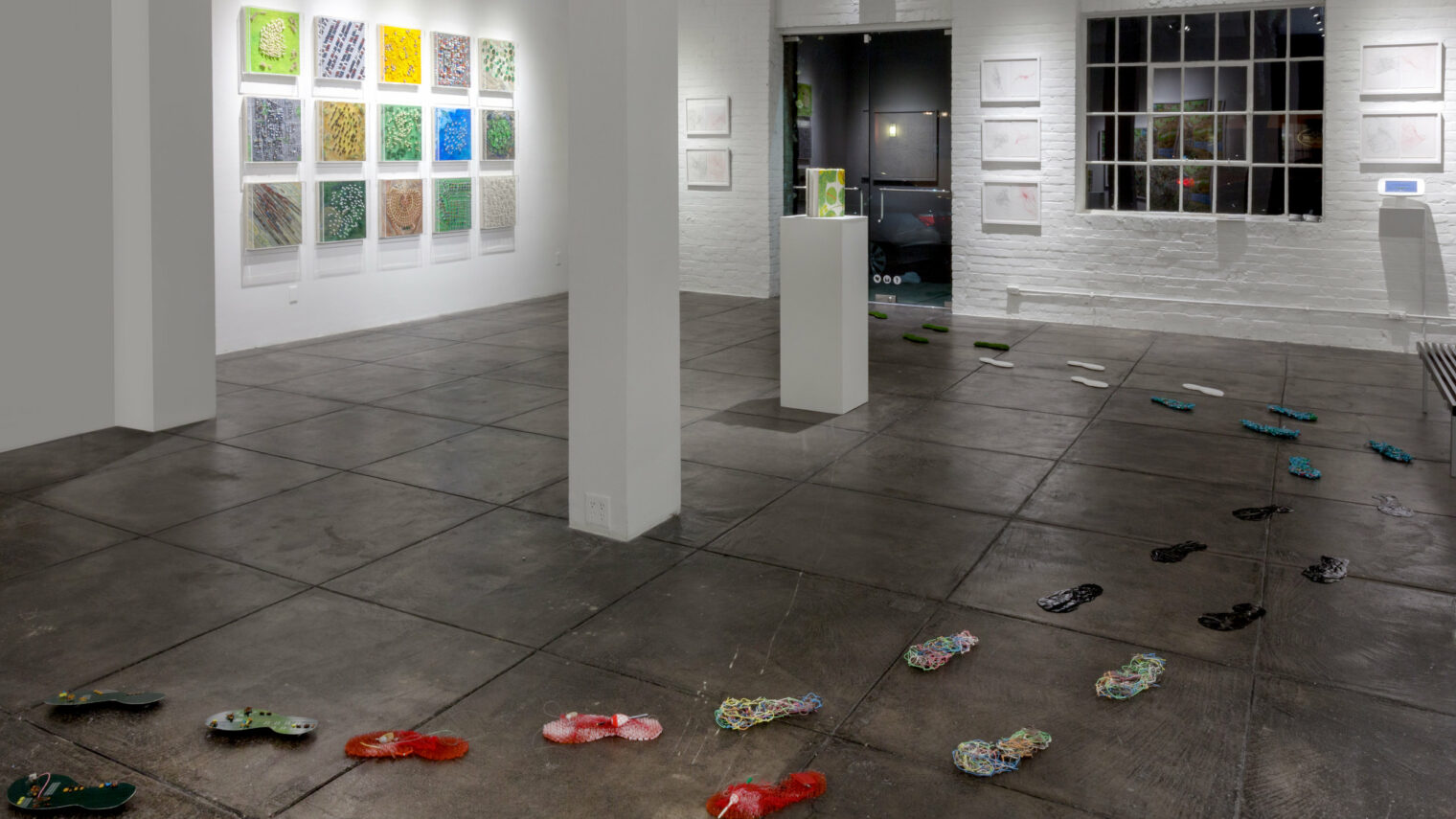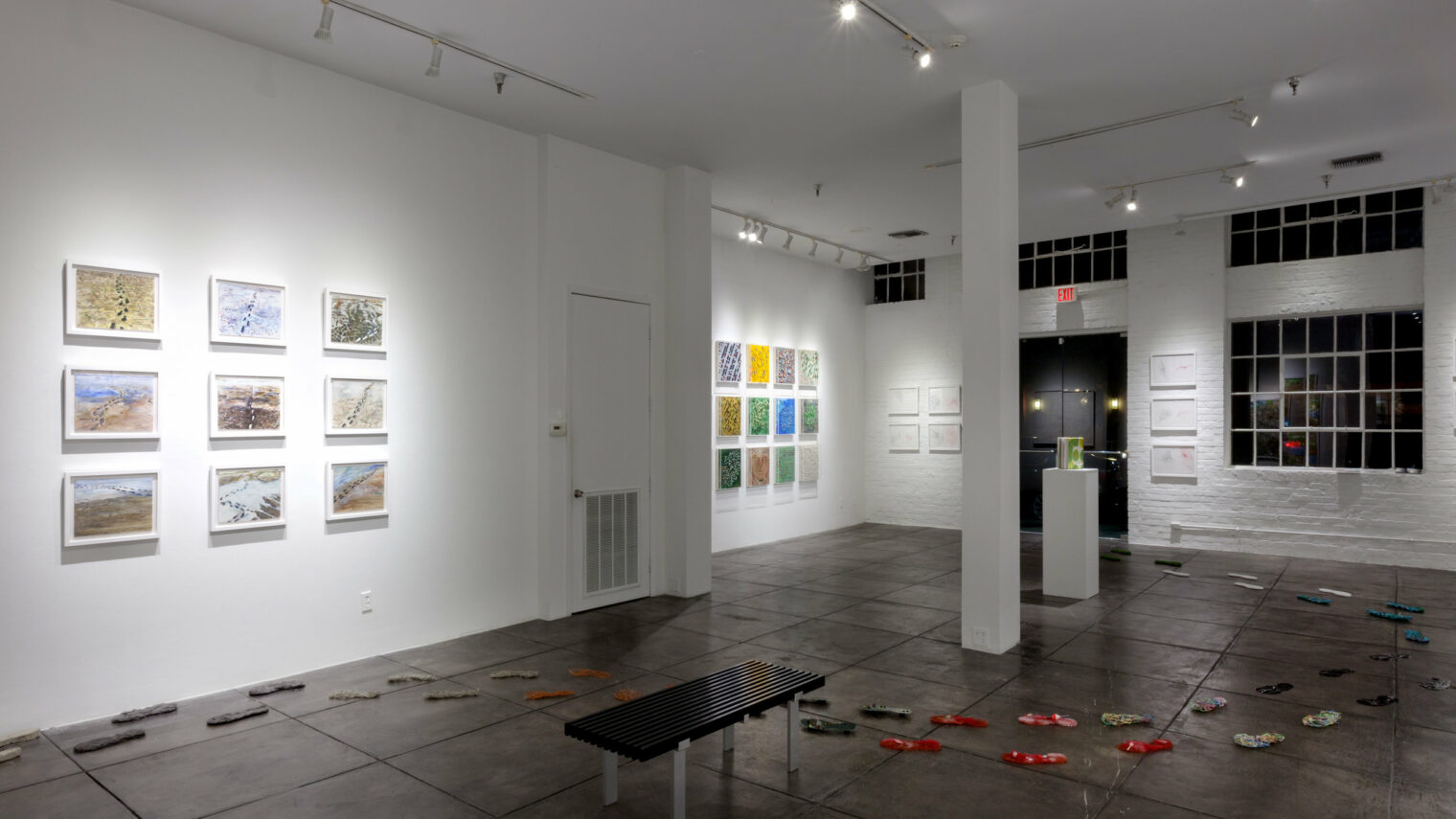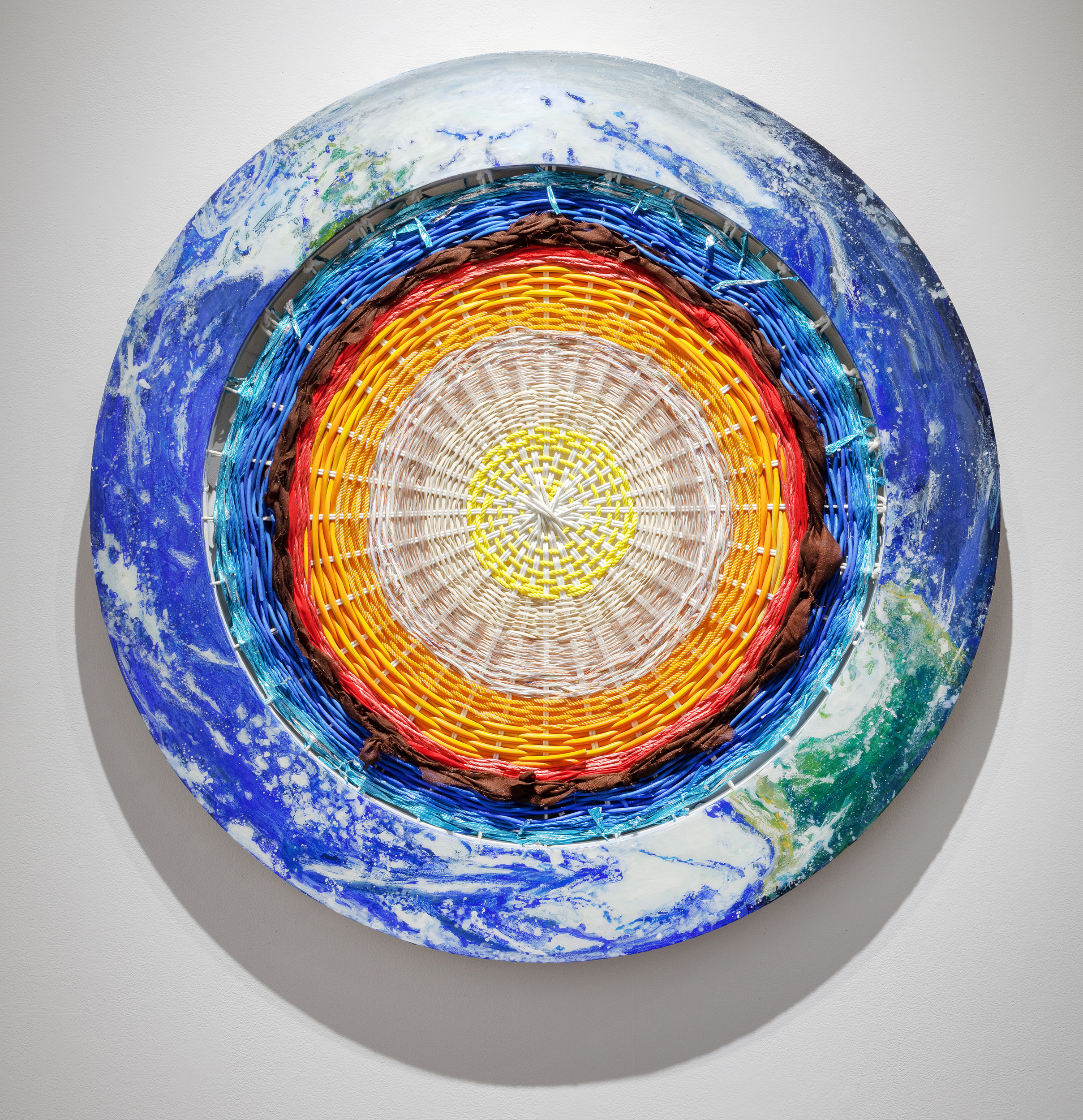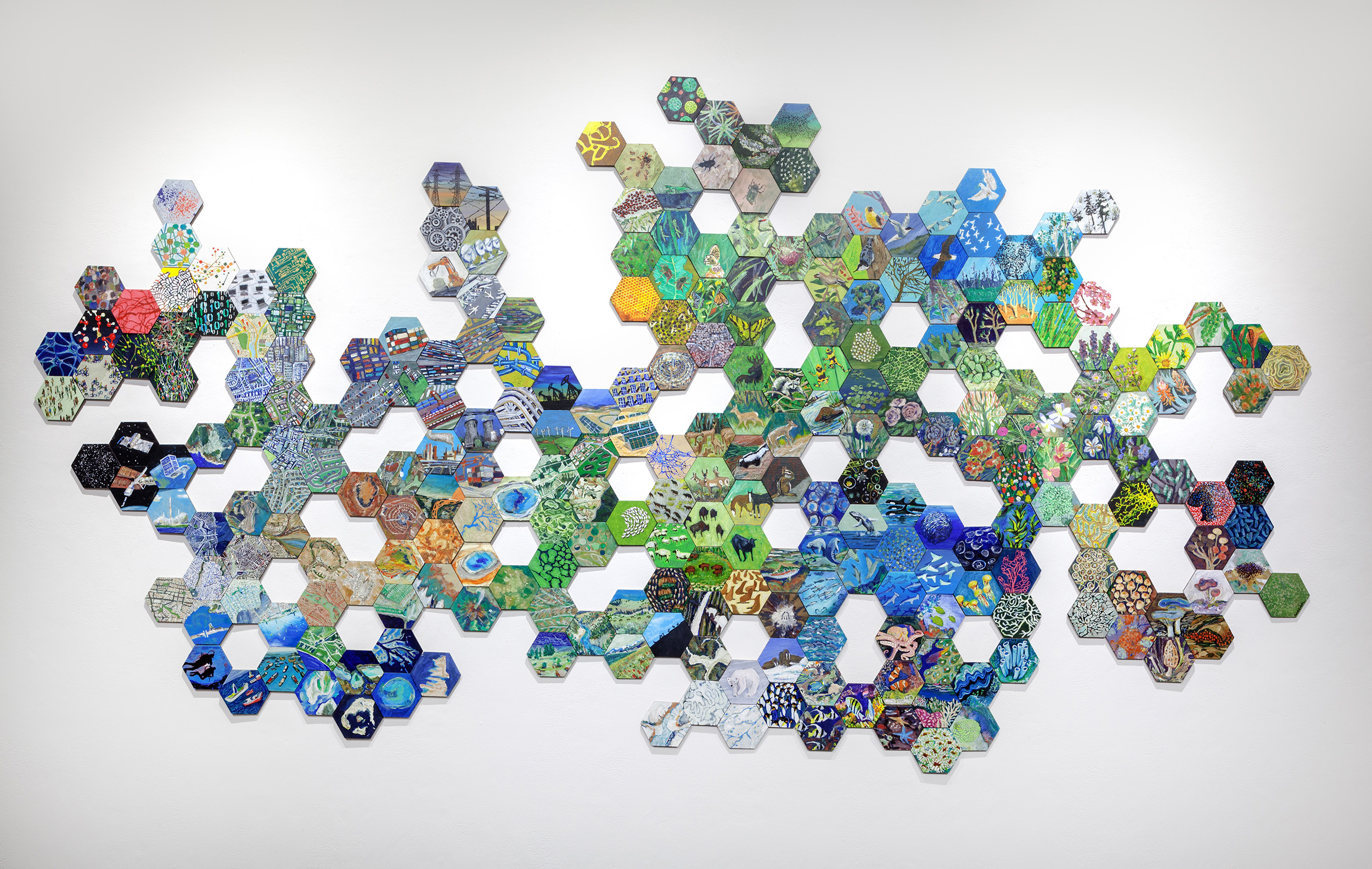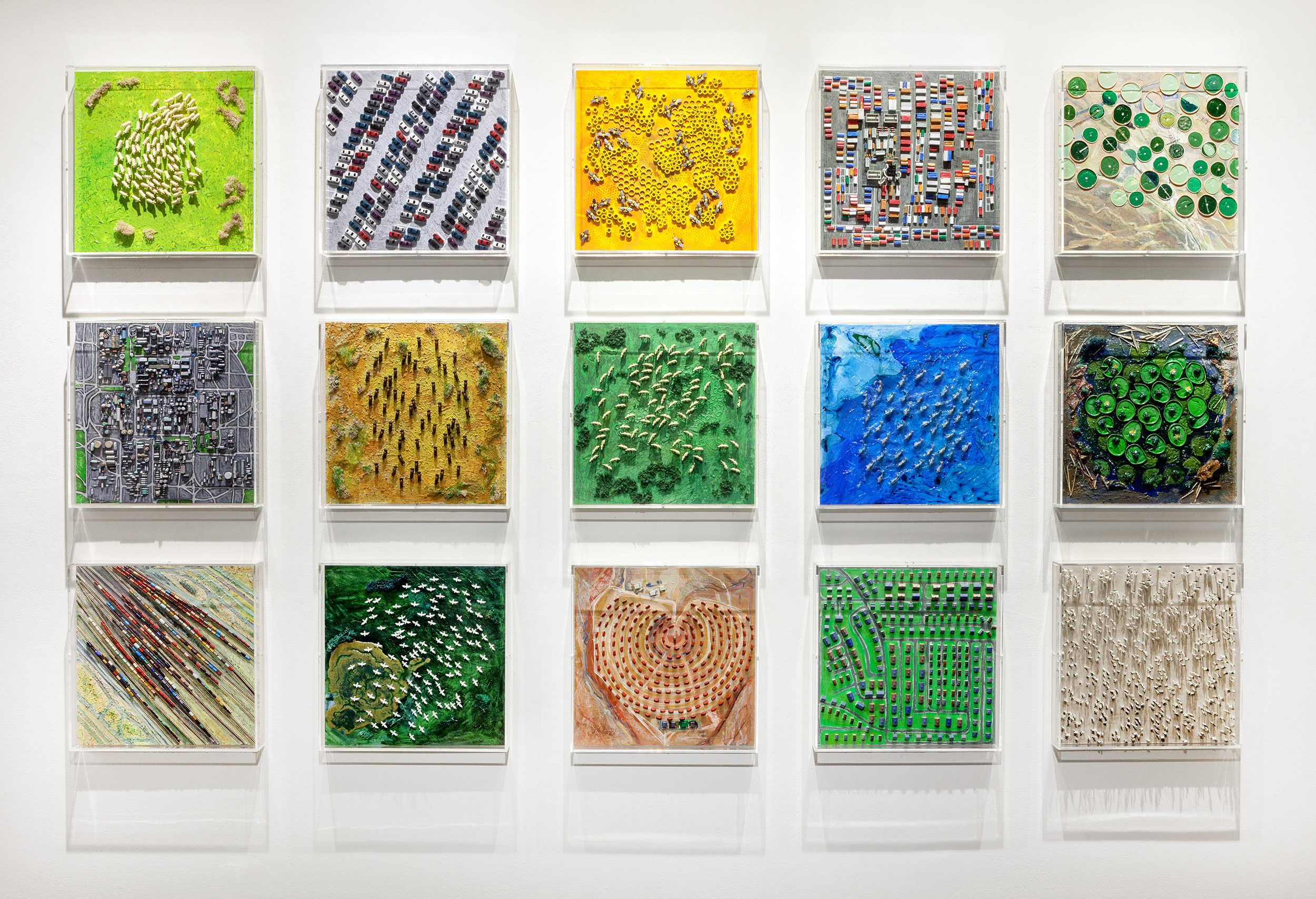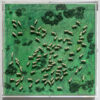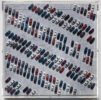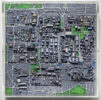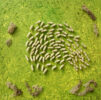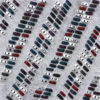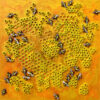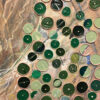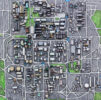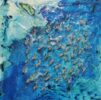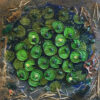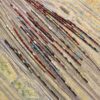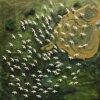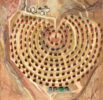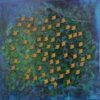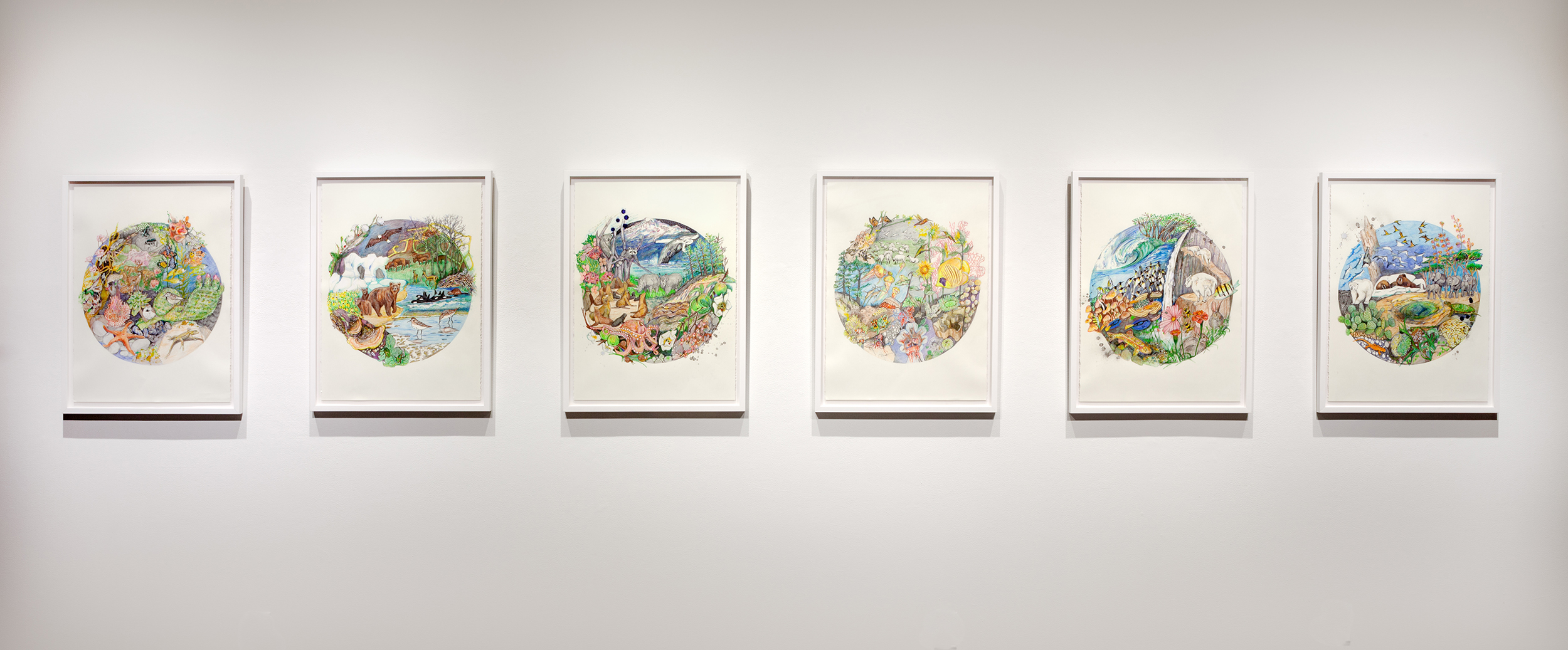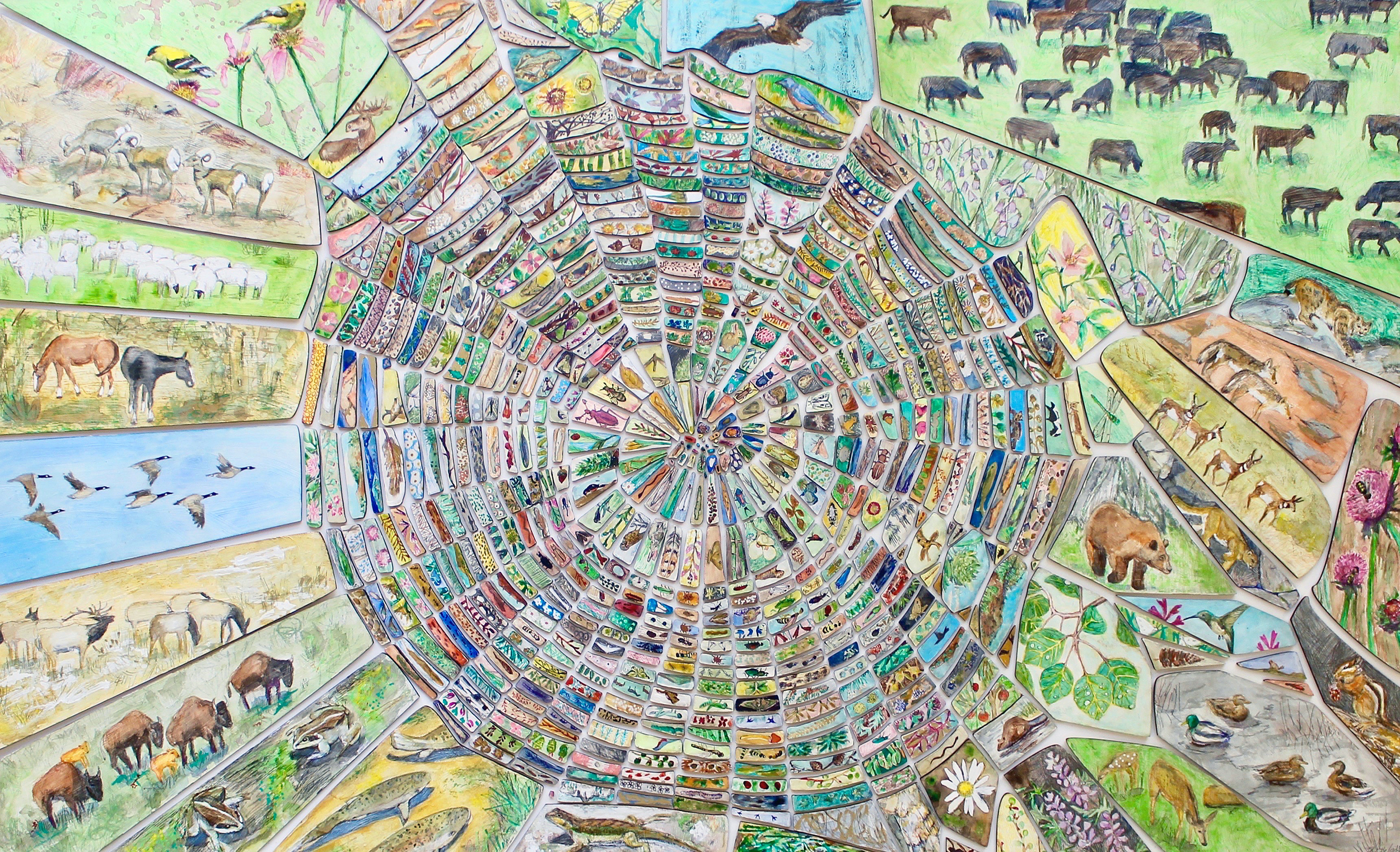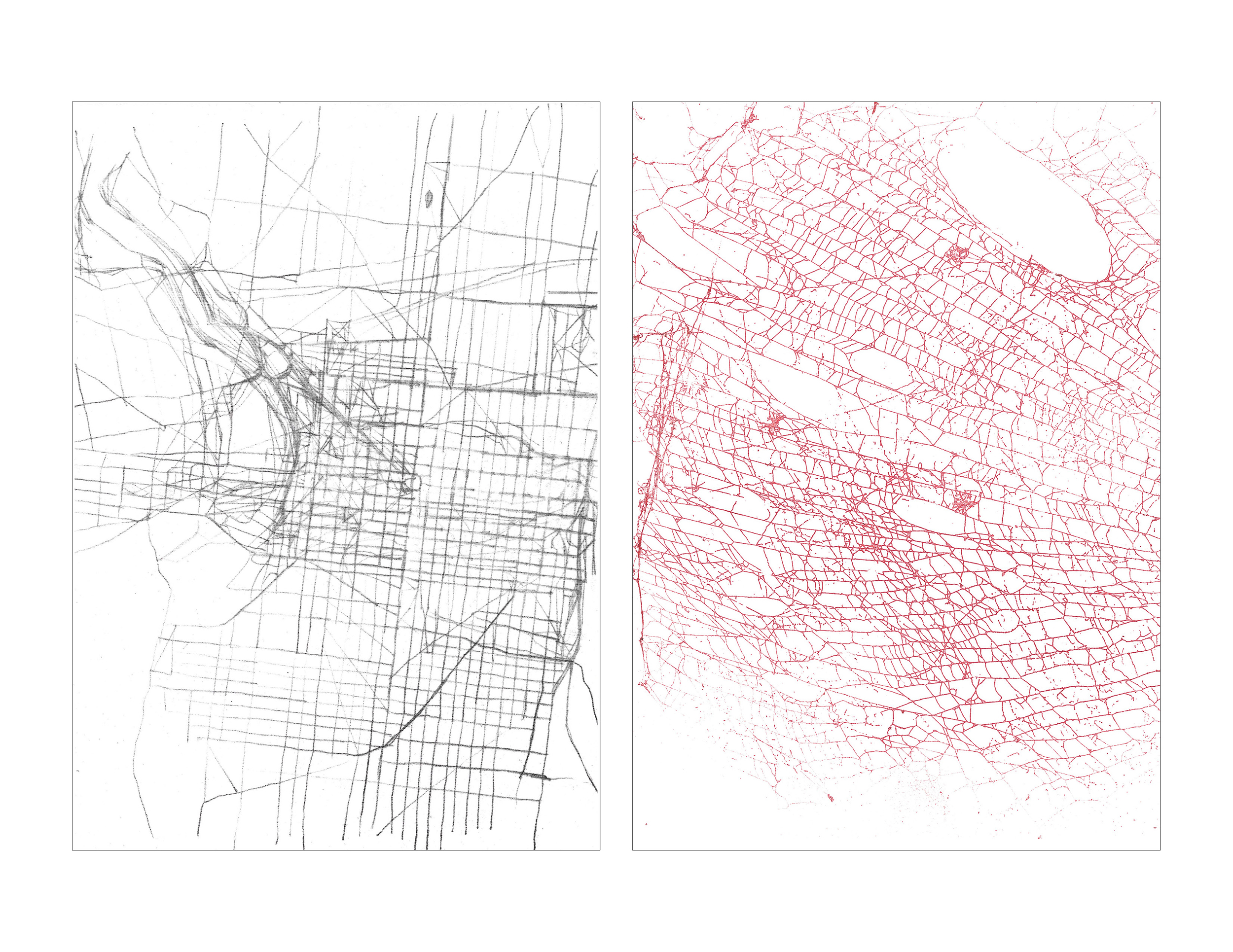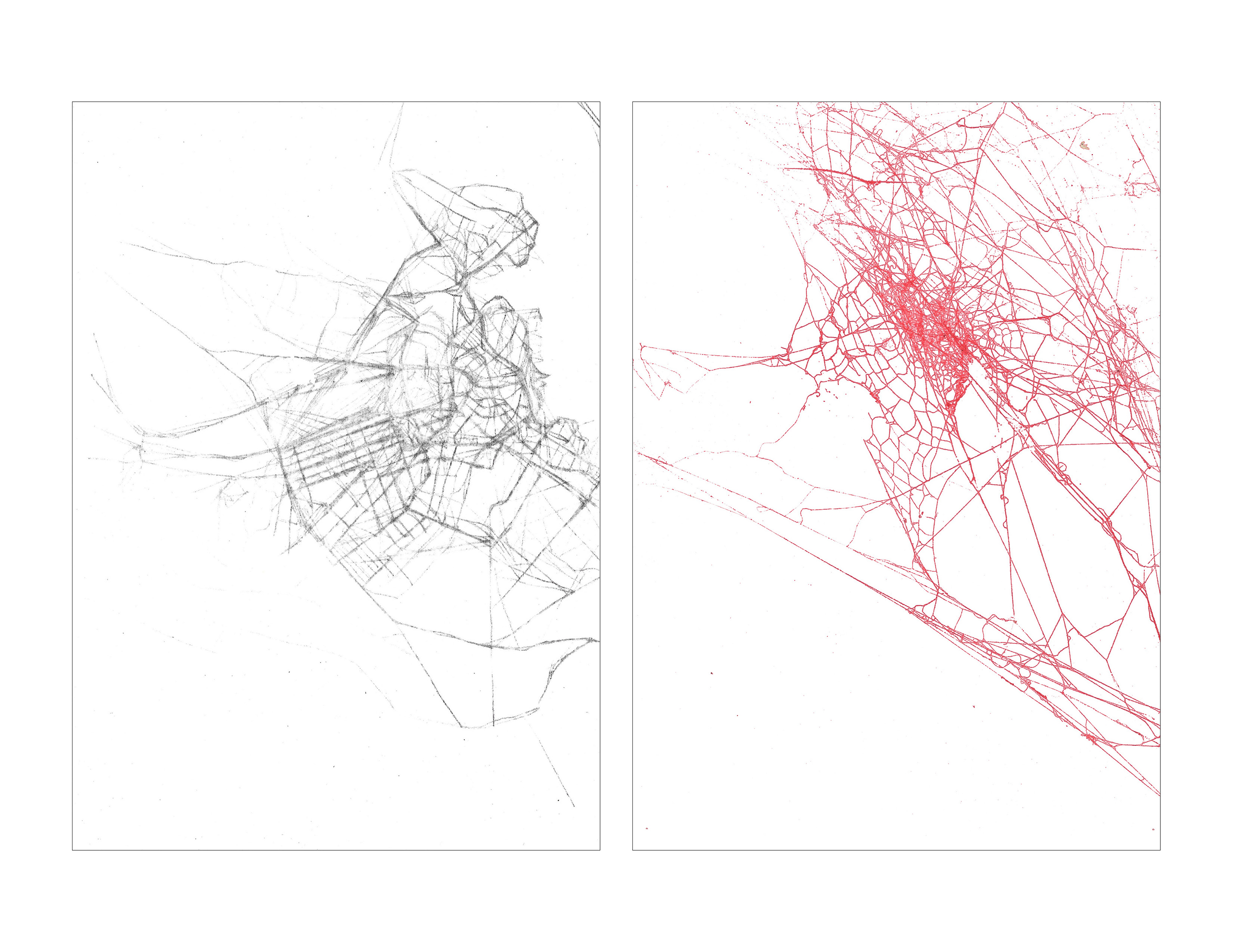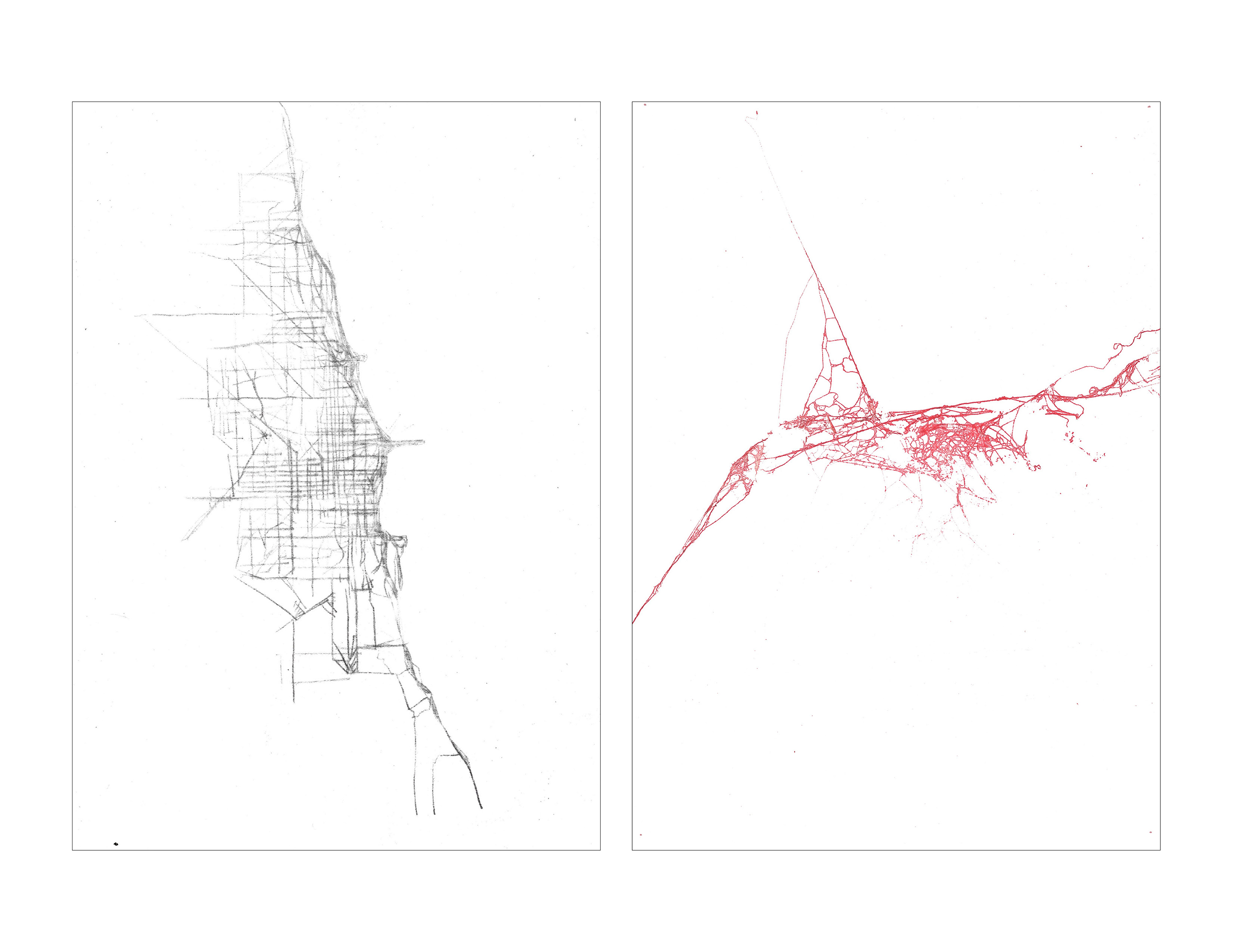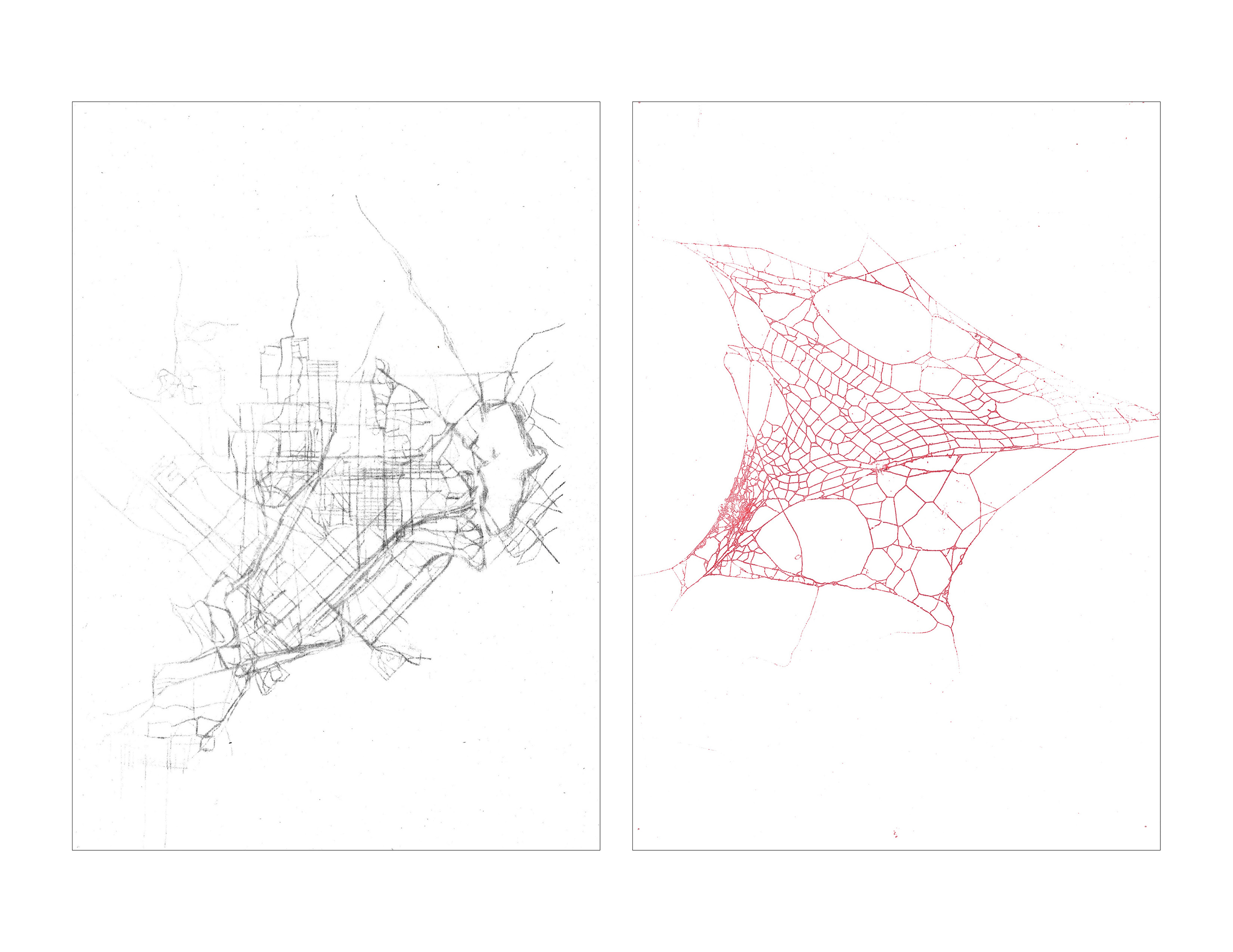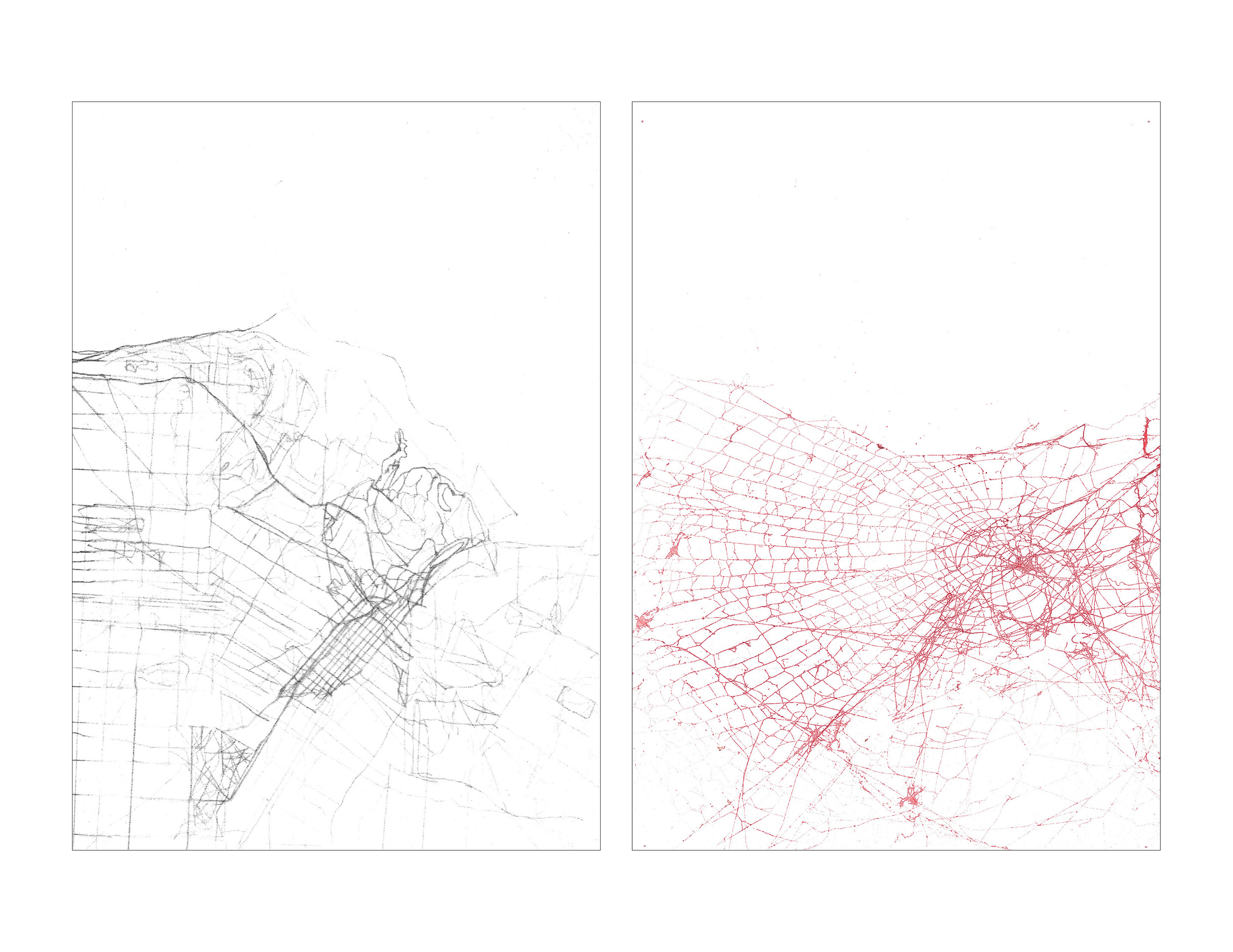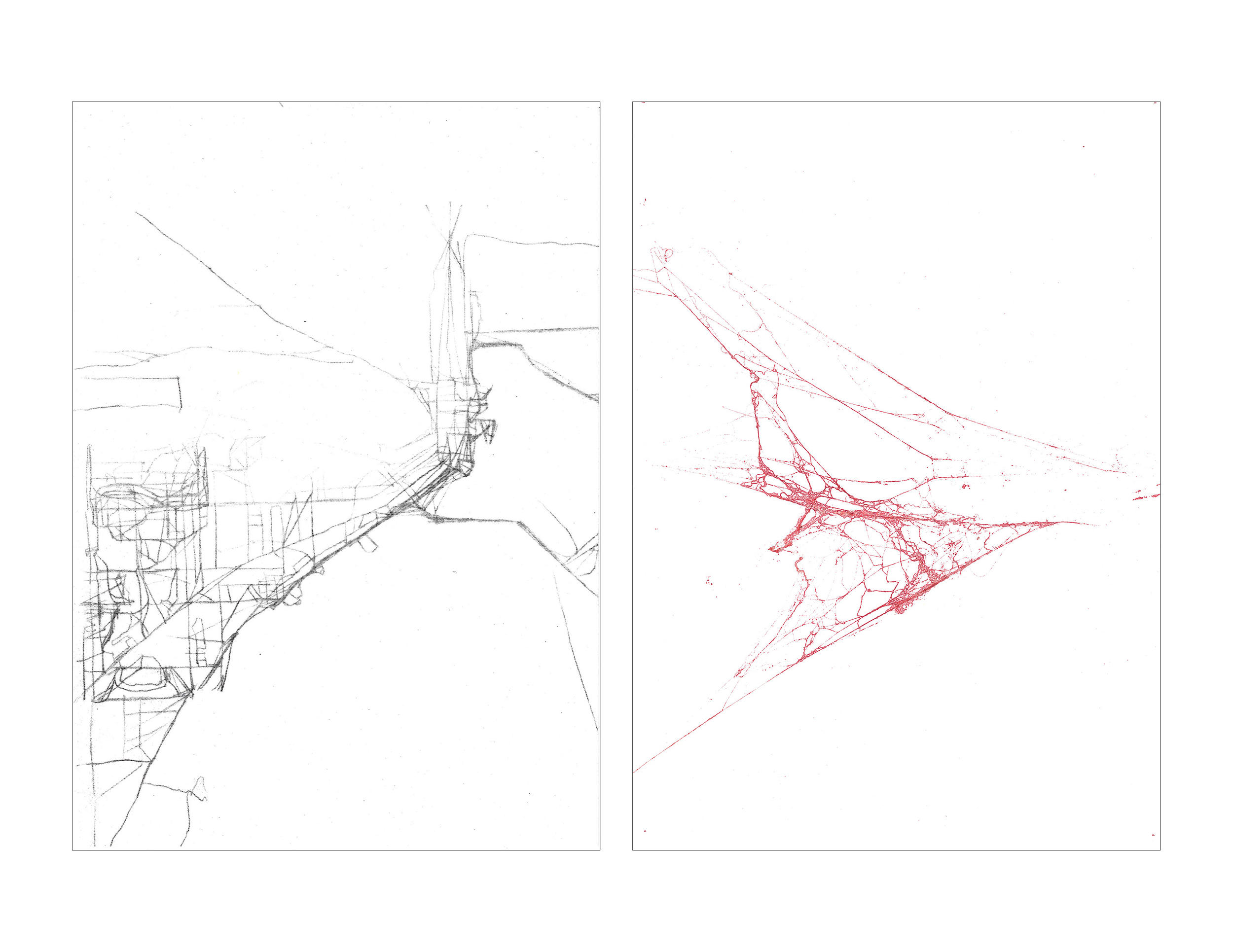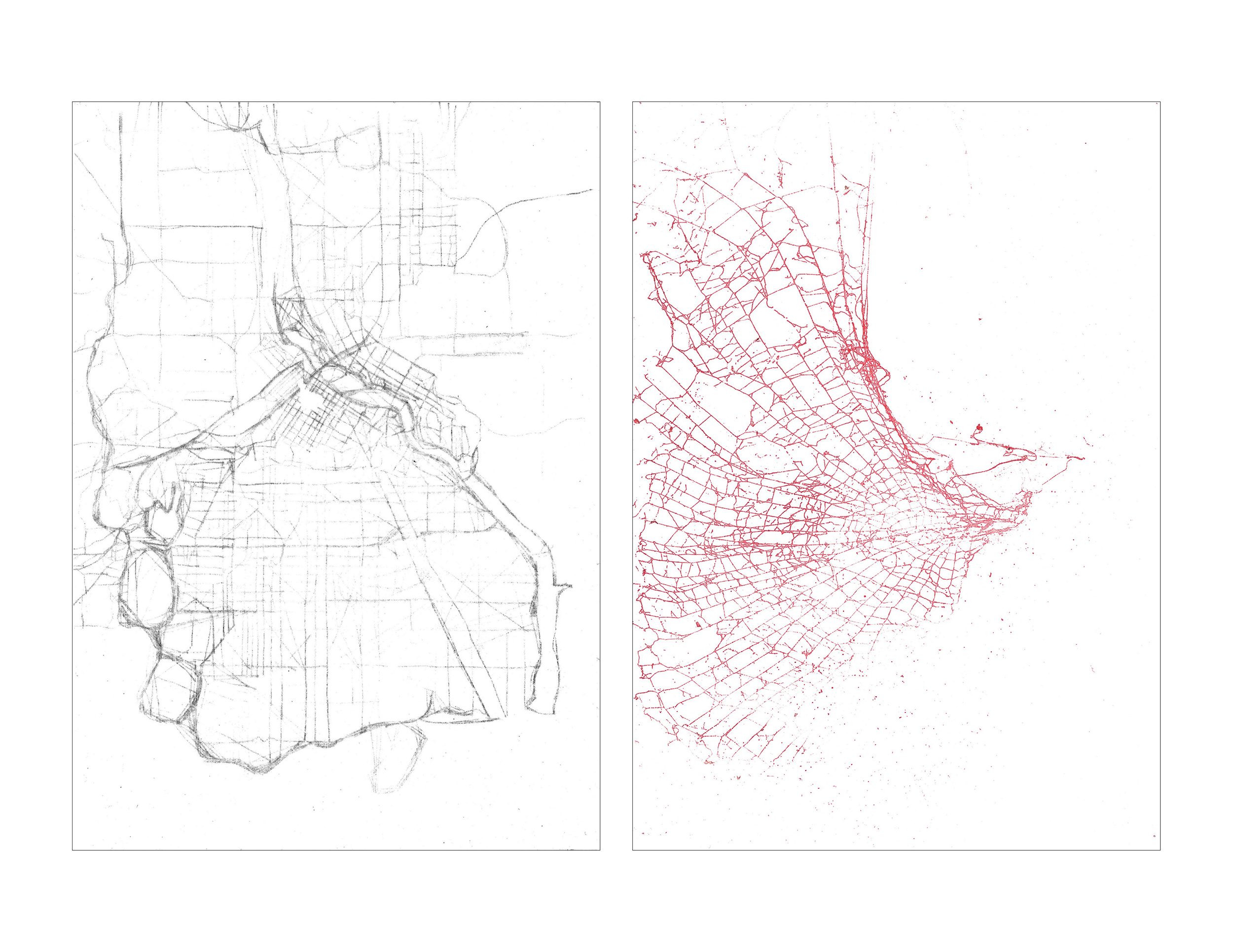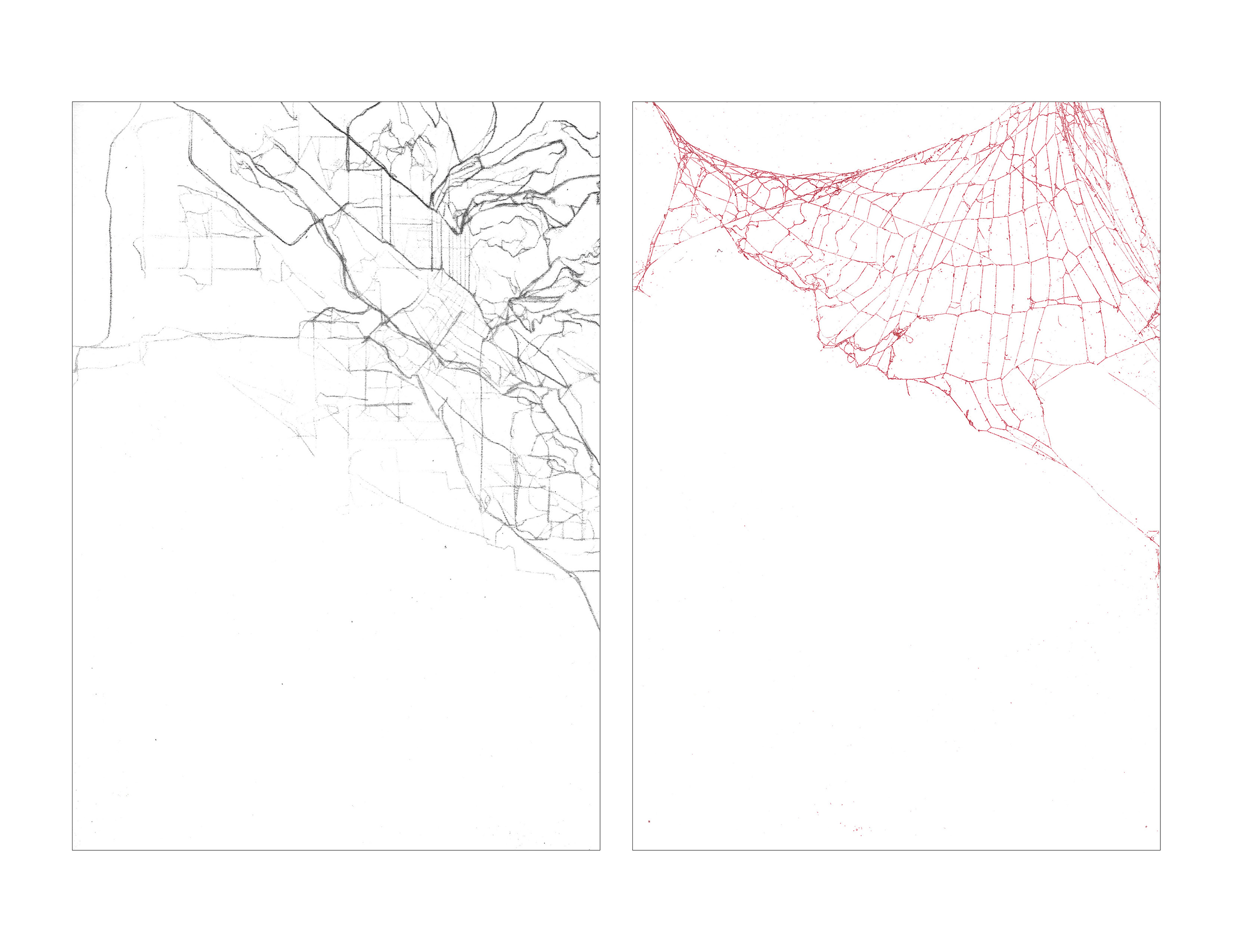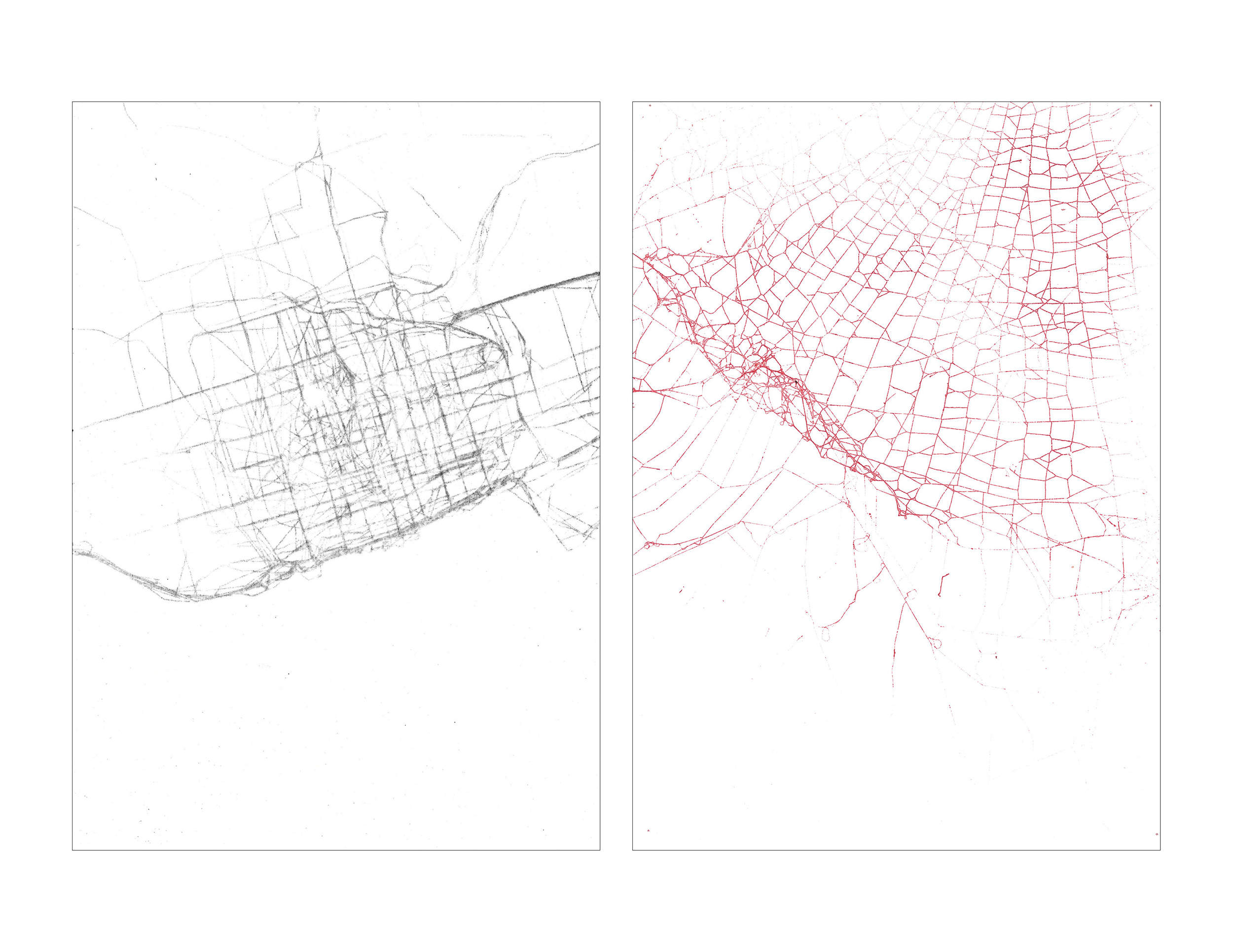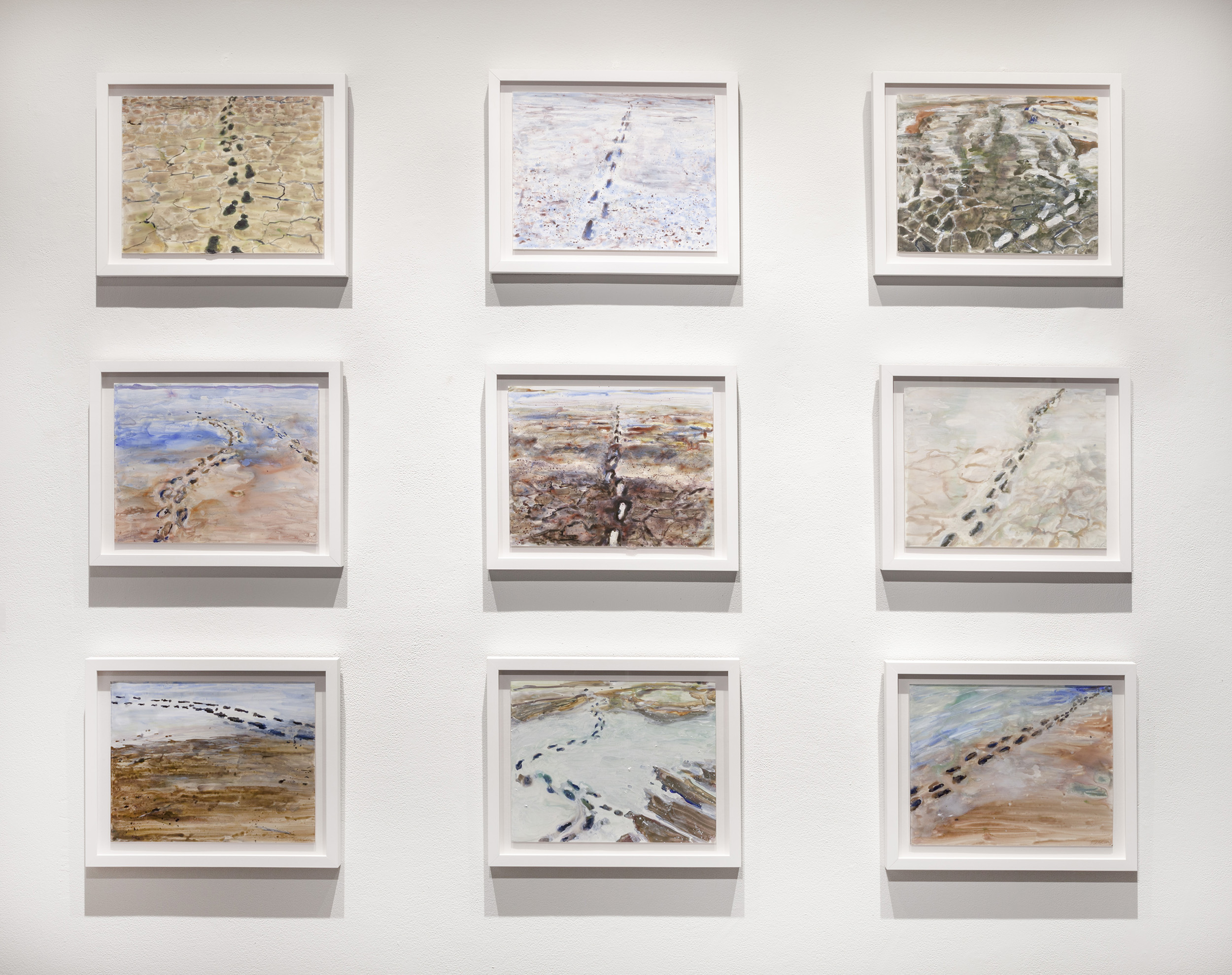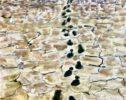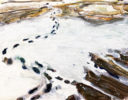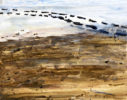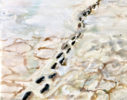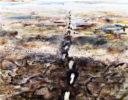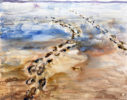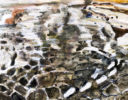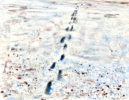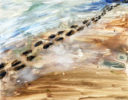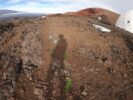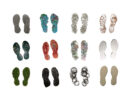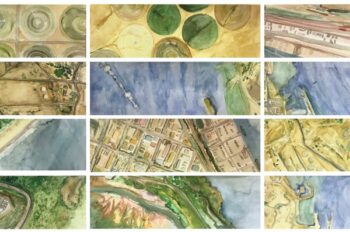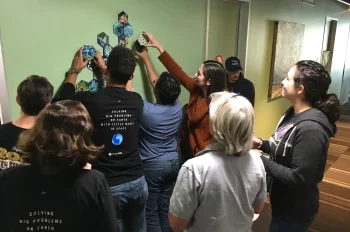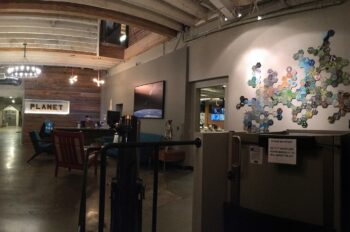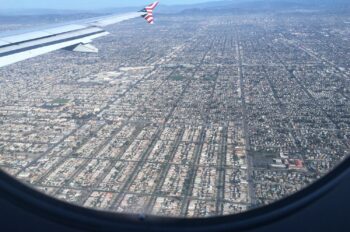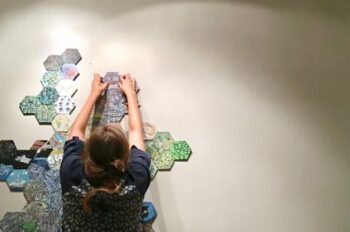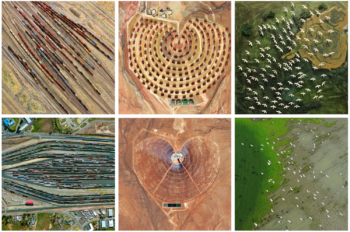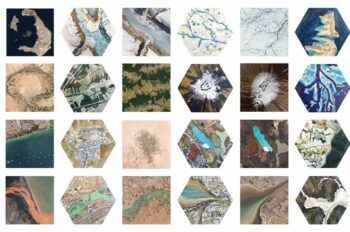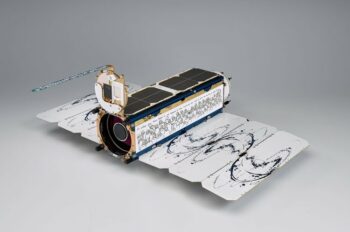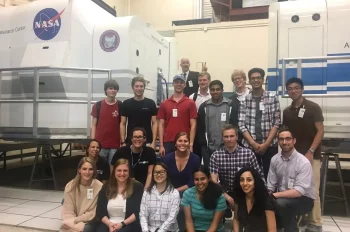“Gribble‘s art is restless, moving from dioramas painstakingly assembled from found materials, to a sprawling network of miniature painted snapshots, to filaments of spider silk arranged to echo urban streetscapes. Despite the diversity of media, her work maintains a continuity of theme, a sense of place, and a reverence for our home planet.”
Robert Simmon, Lead Data Visualizer at NASA
Anthropocene
Anthropocene explores the complex relationship between humanity and the environment. To examine our impact, this collection presents the natural world with and without human influence. Anthropocene encompasses three, key phases: nature without humanity, nature with humanity, and humanity’s impact on Earth, which explore how our increasing influence on natural resources impacts our futures.
Humans are not separate from nature, but integrated and bound by it. Nature without humanity is examined in works Biosphere, Invisible Complexity, and Biodiversity, which marvel at the natural world living harmoniously as one connected and exquisite system. The natural world is innocent, void of human impact, and vibrant in color. These works depict how organisms and environments are alive and entangled. The field of Ecology is also explored in these works that link hundreds of species in unified webs and biospheres. Optimistic in scope, these works take the form of connective structures and circular compositions to suggest interconnectivity and natural unity.
Nature’s nascent relationship with humanity is then revealed in the next series through depictions of man-made systems and burgeoning technologies. The introduction of humans to nature is depicted in Organized Chaos, Linked, Paths, and Earth Core. These works show how humans exist in nature and mimic design inspired by nature. The combination of human populations, technologies, and progress is not separate from the natural world, but born from it. These works convey how our creations and existence derive directly from our origin and that a sense of wonder and purpose is found when human life is seen as just one of many components of a global ecosystem.
The next work, titled Imprints, illustrates our human tendency to claim territory and leave a trace marking our existence. Thereafter, the work, Eco-Footprints, represents the path we leave behind even after we cease to exist. These works fully contemplate human impact on nature, for which theorists have coined the term Anthropocene, as the geological age in which we currently exist. Traces of humanity find evidence in all facets of life. Icebergs contains oil extracted by man, while the deepest parts of the ocean is littered with our trash. Our reach has no bounds: our imprints are left everywhere, replacing pristine nature that existed before us with our own devices.
What comes next? Our impact on nature is undeniable. The question remains if the net effect is entirely destructive, or merely undergoing natural changes in human presence. So much of human progress is associated with advances in technology that increasingly burden our limited resources. How do we grapple with two colliding systems – nature and human progress – that are both needed for evolution? Much of human ingenuity and technology is inspired by nature and natural processes. When we deplete diverse ecosystems, we jeopardize human innovation. However, intentionally slowing progress to protect nature would prohibit human evolution, leaving us with deeper, moral questions about the human right to thrive. How can we regulate society’s progress relative to nature? How do we choose which technology counts over other forms more deleterious for the environment? Is it even up to us, or has the innate DNA of humanity already chosen?
Download: Press Release
